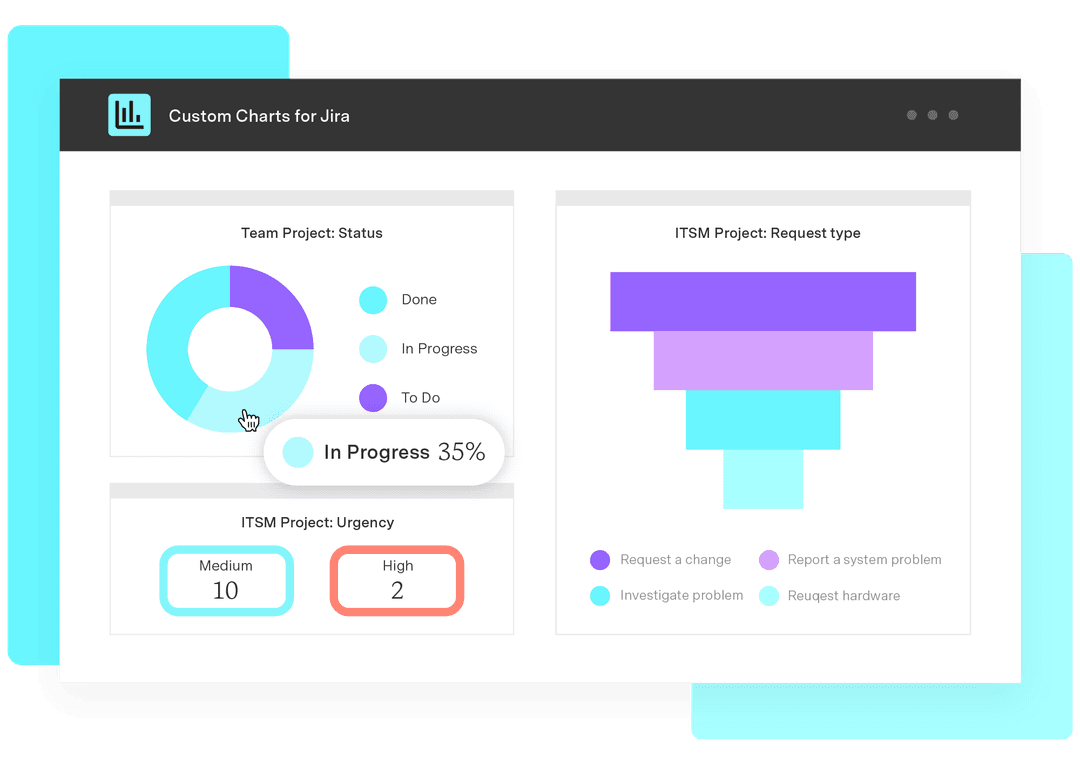Perceptual map: Visualize market positioning
Tempo Team
Understanding how customers perceive your product is critical to building a strong market presence. That’s where a perceptual map comes in. It’s a simple but powerful visual tool that helps teams compare how different brands or products are positioned in the minds of their target audience.
Here, we’ll explain what a perceptual map is, explore common types, and walk through a step-by-step process for creating one. You’ll also see how perceptual mapping fits into broader strategy work and how tools like Strategic Roadmaps by Tempo and Custom Charts for Jira support similar goals by aligning teams around shared priorities.
What’s a perceptual map?
A perceptual map is a chart that shows how customers view competing products based on specific attributes. It focuses specifically on how customers perceive a brand in relation to competitors across key attributes like price, quality, innovation, and trust.
Perceptual maps are sometimes called brand positioning maps, but there's an important distinction: The former focuses on current brand perception, and the latter typically emphasizes the brand's desired positioning.
The goal of both is to capture subjective perceptions using objective-looking data. For example, if your product is high-end and feature-rich, while a competitor is budget-friendly but bare-bones, a perceptual map can illustrate that difference at a glance.
Marketers and product teams use these maps to:
Identify gaps in the market
Compare how their product is perceived against competitor products
Align brand messaging with customer expectations
Make informed decisions about positioning or product strategy
Perceptual maps aren’t only about looking back at how things are, they also help you plan where to go next.
Types of perceptual maps
There’s no one-size-fits-all when it comes to perceptual mapping – the type you choose depends on your goals and the data you have available.
Below are the most common examples of perceptual maps.
Two-dimensional perceptual maps
Two-dimensional is the most popular and widely used format, with one attribute plotted on the x and y axis respectively. For example, “price” might be plotted on the x-axis and “quality” on the y-axis. Each product or brand is then plotted as a point based on how it scores for those attributes.
Two-dimensional maps are easy to understand and quick to create, making them ideal for workshops, presentations, and stakeholder discussions.
Multi-dimensional perceptual maps
Sometimes, two dimensions aren’t enough. Multi-dimensional maps use statistical techniques like multidimensional scaling to visualize more complex data across three or more dimensions.
This multi-dimensional format for a perceptual map can uncover deeper insights, such as hidden patterns in customer preferences. However, it often requires specialized tools and more advanced analysis.
Joint perceptual maps
Joint perceptual maps combine customer perceptions with preferences. For example, you might show how different smartphone brands are perceived across dimensions like battery life and camera quality, then overlay data about how important those features are to customers.
This approach is beneficial for identifying areas where your product could gain a competitive edge by meeting unmet customer needs.
Spidergram perceptual map
Also known as a radar chart or star plot, a spidergram perceptual map displays multiple attributes radiating from a central point. Each product or brand forms a shape based on its performance across each attribute.
Spidergrams are particularly helpful for comparing several products at once across multiple criteria such as reliability, innovation, support, price, and ease of use. The visual footprint makes it easy to spot strengths, weaknesses, and overall positioning at a glance.
How to create a perceptual map: 5 steps
You don’t need complex software to get started. Whether you’re sketching by hand or working in a spreadsheet, here’s how to create a perceptual map in a few structured steps:
1. Define the purpose of the map
Before you gather data, clarify your goal. Are you trying to find white space in the market? Test against competitors? Improve messaging? A focused purpose will help you choose the right attributes and interpret your findings.
2. Select attributes or dimensions
These come from customer surveys, user interviews, reviews, or internal brainstorming sessions using techniques like an affinity diagram. Some examples include:
Price
Ease of use
Customer support
Brand recognition
Product variety
Stick to two attributes for a basic map, or use more if you’re ready for advanced techniques.
3. Collect data
Once you’ve chosen your attributes, gather input on how customers perceive each brand or product. You might use:
Survey ratings (e.g., 1 to 5 scale)
Focus group feedback
Online review analysis
Internal expert scoring
And most importantly, try to keep data collection consistent across all products being compared. An error in your data collection can throw off your results.
4. Plot the data
Map your data by placing each brand or product on the grid according to its scores. For a two-dimensional map, plot one attribute on each axis. The intersection shows where a brand sits in the competitive landscape. Use different shapes or colors to represent distinct categories or customer segments if you want a visual element to your dataset.
5. Analyze and act
Look at the results for patterns and outliers. Are most competitors clustered together? Is there an open quadrant that signals a potential opportunity? Are customer perceptions aligned with how you want your brand to be seen?
Use the insights to inform your product roadmap, brand positioning, and release planning strategy.
A perceptual map template can speed things up if you're looking for structure. Many templates are available in spreadsheet form or built into analytics tools.
Who should use a perceptual map?
Perceptual maps are used across various roles by teams focused on customer experience, brand expansion, and competitive advantage analysis. Here are some examples:
Marketing teams
Test brand perception against competitors
Refine messaging and campaigns
Identify gaps between brand promise and customer experience
Product managers
Validate product-market fit
Prioritize features based on perceived weaknesses
Explore underserved customer needs by combining perceptual maps and user story mapping insights
Strategy and leadership
Make positioning decisions based on real-world data
Visualize shifts in market dynamics over time
Align internal teams around a shared understanding of the landscape
Perceptual mapping belongs in your toolkit if your role involves understanding customer behavior and making strategic choices within your organization.
Enhance strategic alignment with Tempo
Perceptual maps give you a snapshot of market positioning, and Tempo products help you take the next step and align your plans across the organization. With Strategic Roadmaps by Tempo, product and strategy teams can visualize long-term initiatives in a shared timeline and keep stakeholders on the same page from vision to delivery.
Whether you're reviewing capacity, scope, or performance, clear visuals help everyone stay informed and accountable. Custom Charts for Jira adds another layer of clarity by adding a visual element to progress tracking and insights sharing across teams.
Just like a perceptual map reveals where your brand stands, Tempo's tools help you decide where it's going and how to get there.












































